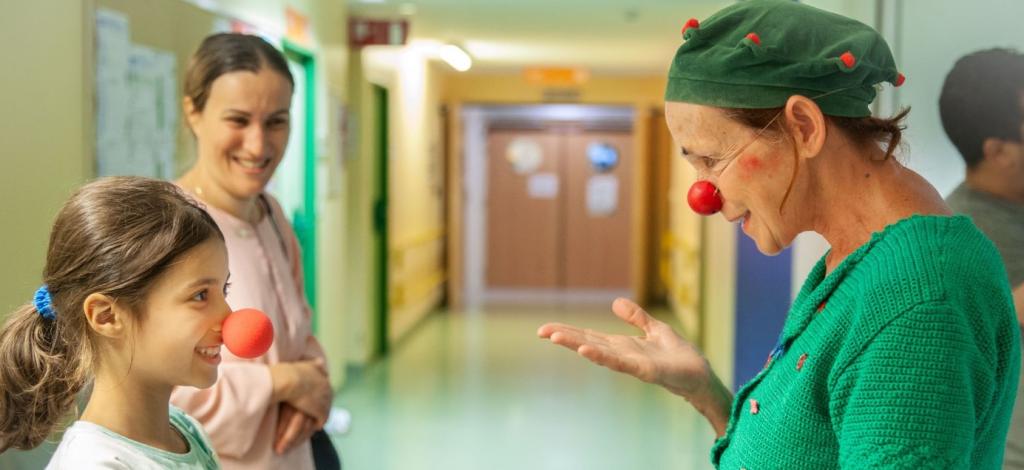World Laughter Day at the Children's Hospital (Brussels)
An interview with Claire Van Pavenage, psychologist at the Queen Fabiola Children's University Hospital (HUDERF)

To mark World Laughter Day, we spoke with Claire Van Pavenage, a psychologist at HUDERF, about the role of humor and laughter in a child’s development — including during illness.
A four-year-old laughs nearly 300 times a day on average
How does a sense of humor begin to develop in young children?
Humor starts taking root in infancy. Even in the earliest months, babies respond to tickles, funny faces, and curious sounds. These sensory experiences are their first encounters with laughter and shared joy. A baby’s laugh is more than a reflex — it’s a way of connecting, a visible sign of pleasure that strengthens the bond with caregivers.
How does this capacity evolve as a child grows?
As children get older, their sense of humor becomes more complex. They find delight in the unexpected, invent silly words, pretend, and create wildly imaginative role-play games. Around age six, children begin to understand that laughter isn’t just fun — it’s also social. It becomes a bridge to others, a key tool for making friends and navigating group dynamics.
Is laughter really that present in a child’s daily life?
Absolutely. Children laugh a lot — to the delight of those around them. A four-year-old laughs nearly 300 times a day on average. For comparison, a 40-year-old would need about ten weeks to reach that same number. This striking contrast comes from a study by Professors Jennifer Aaker and Naomi Bagdonas at Stanford University.
What about children living with illness — do they still laugh?
Yes, often. When surrounded by supportive care and when symptoms are well-managed, sick children continue to smile and laugh genuinely. It’s important, though, that they don’t feel pressure to laugh to reassure others. When laughter is natural, it becomes a real source of release — reducing anxiety, stress, and even physical pain. This kind of laughter often emerges in interactions with parents, siblings, friends, educators, hospital clowns, and healthcare professionals — all of whom recognize the therapeutic power of humor.
Laughter seems to have a special role in the hospital setting. Can you explain how it works in this context?
According to researchers Kinsman and Gregory, humor fosters connection, breaks down hierarchical barriers, and allows difficult emotions to be expressed indirectly. In a hospital, humor becomes a form of escape from the weight of illness. It offers a moment of lightness, a reminder of vitality, and a powerful sense of being alive. What makes us laugh or smile can create the feeling that something opens up — a window in a routine often dominated by pain, prognoses, and uncertain futures.
To explore further
- The hospital clown organization Les Docteurs Zinzins → https://www.docteurszinzins.be/
- Study on laughter and pain reduction in clinical settings → BMJ article
- Research summary on the therapeutic impact of humor → PubMed
- Perspectives on humor in care (French PDF) → Brusano article